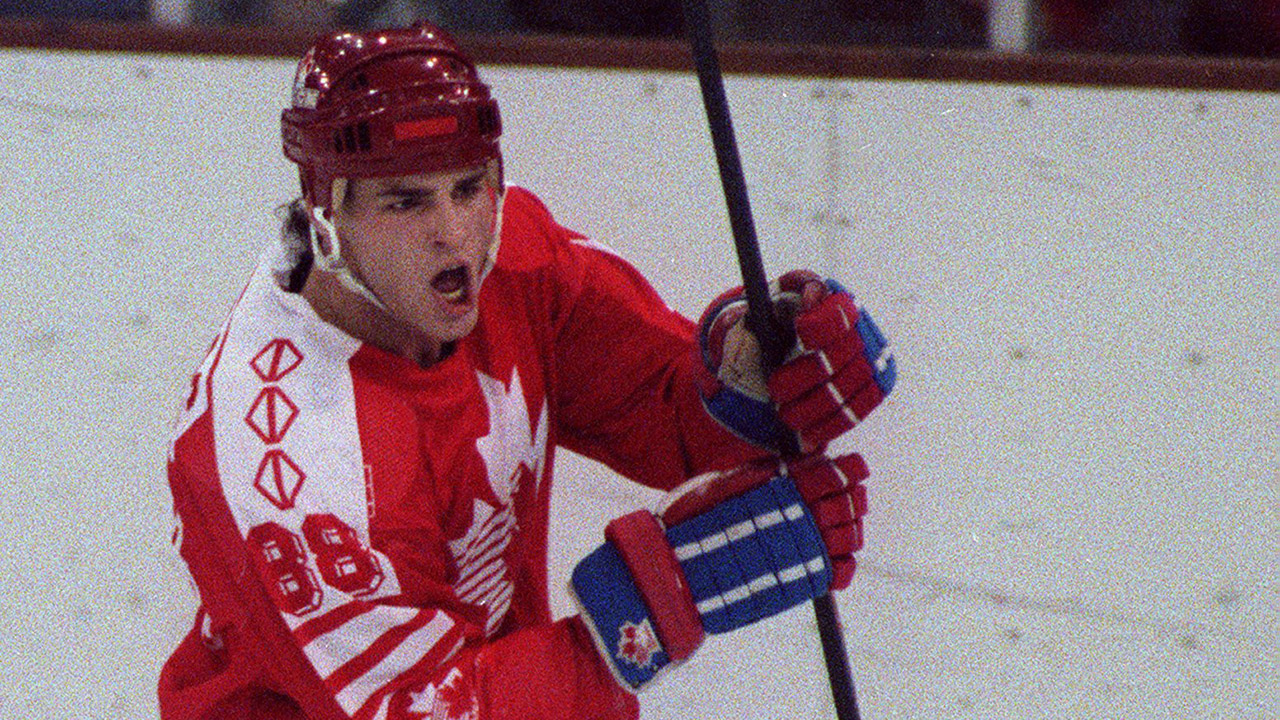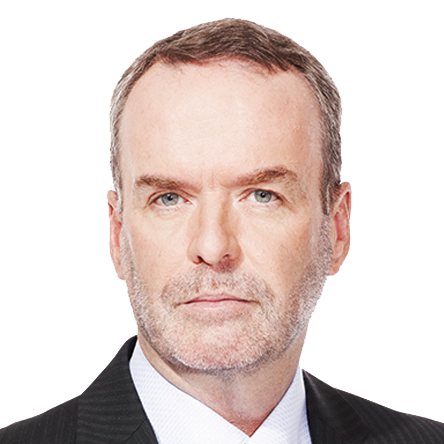There once was a really good player, who was so good in fact that he eventually became captain and the face of the franchise.
He became one of the very best players in franchise history. One of the best in the game. Hockey life was really good.
But then things started to go horribly wrong. There was feuding with the owner and general manager. His leadership was questioned. His captaincy was removed. The relationship between the player and the team crumbled. It became unfixable. Ultimately, the ending was not good.
The great player, the former captain, moved on. It was ugly. For the longest time there was an estrangement between the player and the team and that was just fine with both sides.
“I don’t care if I talk to him for the rest of my life,” the general manager once said. “It won’t kill me.”
[snippet id=3816507]
Seemingly, the ‘twain would never meet and that was just fine with both sides. But after several years apart, time and circumstance offered perspective. There was some healing. Fences began to get repaired.
They hadn’t talked for a long time, but one day the team reached out, realizing how important and significant the player was to its past, the player realizing how important the team had been to him. They connected and agreed it was time to move on, to look ahead, to be better. A large chunk of that past, they agreed, had been good, really good.
Sound familiar?
The player could have been Dave Keon, arguably the greatest Toronto Maple Leaf ever, who was a key player in the franchise’s last Stanley Cup win, who went on to become their captain. But for a variety of reasons, eventually a huge wedge was driven between him and the organization, one that took decades to repair.
There was finally a thawing, an appearance here, an appearance there, and finally there was true peace, a reattachment emotionally and physically a year ago, when Keon’s and several other Leafs greats’ numbers were retired and raised to the rafters.
A similar narrative has unfolded in Philadelphia with Eric Lindros, whose No. 88 will be retired and raised to the rafters Thursday evening.
—
Watch the Eric Lindros jersey retirement ceremony live on Sportsnet Ontario Thursday at 7 p.m. ET.
—
As the old joke goes, not that many years ago, the Flyers and their fans would have agreed to No. 88 being raised to the rafters… but only if Lindros was wearing it at the time!
That’s how bad the ending was in Philadelphia between Lindros and the Flyers.
But those days are seemingly done and the final chapter in one of the most dramatic chapters in, certainly recent hockey history, is about to be authored with a happy ending.
From an early age, Lindros was pegged to become The Next One. To take the torch from the likes of Wayne Gretzky and Mario Lemieux. And in so many ways he did, just not for long enough mostly because of injuries.
He had the rare combination of great size, toughness and amazing skill. He was the prototypical power forward. And he eventually became the best player in the league during his time with the Flyers.
Despite how good Lindros was, however, throughout his hockey career he always seemed to be a polarizing figure.
It started in junior hockey, when as a 16-year-old sensation he was easily the consensus first overall selection in the 1989 Ontario Hockey League draft. That year, the Sault Ste. Marie Greyhounds had the first pick, but they were told by the Lindros family, because of educational concerns and that the Northern Ontario city was too far from his Toronto home, to not select him. Of course, they did.
Lindros had made it clear he wouldn’t report and didn’t. And he was willing to suffer the consequences.
Back then, the OHL didn’t allow its teams to trade first-round selections, but because it was a player of Lindros’ magnitude they changed their bylaws. Eventually, he was traded to the Oshawa Generals, who would win the Memorial Cup that season.
As it turned out, the deal worked out for the Greyhounds as well. They soon became league and then Memorial Cup champions in 1992-93, the same season Lindros arrived in the NHL.
Of course, that was the end of another Lindros saga.
Lindros, naturally, was the obvious first pick in the 1991 NHL entry draft, but did not want to play for the Quebec Nordiques, who owned that pick. It was less about the culture and the city as it was about co-owner Marcel Aubut and whether they could maximize Lindros’ marketing potential in that market.
Lindros refused to report, giving birth to L’Affaire Lindros. For some, he was applauded for taking a stand, for exercising his rights, however unpopular that may have been in traditional hockey circles. In the eyes of others, he was a rebel and villain.
Whatever the case, he was again willing to suffer the consequences. Lindros played for four different Canadian teams that season: in the Canada Cup, the World Junior Championship, the 1992 Olympic Games and 13 games with the Generals. All the while, the Nordiques tried to convince him to change his mind even offering a whopping 10-year, $55-million contract.
Finally, at the 1992 draft in Montreal, the Nordiques decided there was no other option than to make a trade. But, of course, that would not be easy, either and it was through no fault of Lindros.
Aubut traded Lindros to two teams – the Flyers and the New York Rangers – on the same day, hours apart. The NHL had to appoint labour lawyer Larry Bertuzzi to determine to which team Lindros should go.
Both trade offers were good, but that wasn’t the issue. After 11 days of investigation Bertuzzi determined that Aubut had first reached a deal with the Flyers late owner Ed Snider and general manager Russ Farwell.
Lindros was just glad to see the saga over and very happy to become a Flyer.
“Bags are packed,” he said. “I’m just happy to get out of there (Quebec).”

At age 19, life really began for The Next One. Expectations that were already huge, became even bigger. He became the highest-paid player in the game. He was expected to turnaround the franchise. He was supposed to bring the Stanley Cup to Broad Street. As it evolved, the Rangers survived nicely and won the Stanley Cup in 1994. The Nordiques, who Aubut sold, moved to Colorado and won the Stanley Cup in 1996 and again in 2001.
Meantime, Lindros was everything the Flyers had hoped for, though not a champion. He became the foundation to help them build a new arena. He soon transformed the fortunes of the team on the ice. He was a dominant player for five seasons, winning the Hart Trophy in his third year, in which the Flyers also advanced to the Eastern Conference Final.
He became the best player in the league.
In 1997, the Flyers got to the Stanley Cup Final, but were swept by the Detroit Red Wings. And that might be when, if the not the first, then certainly one of the first sizeable cracks in the relationship between the player and the team was seen. There were whispers, not-so-subtle inferences, during the Final that Lindros didn’t play as well as he could have. The loss stung on many levels.
Long-time Philadelphia hockey writer Jay Greenberg once said that, for whatever reasons, Lindros always seemed to get judged more for what he didn’t do, than what he did.
After that, injuries started to impact his time with the Flyers, concussions especially, and questions were raised by the family over the medical attention Lindros received. Clarke stopped talking to his star player. It was the beginning of the end in Philadelphia, which finally arrived in the summer of 2001, when Lindros was traded to the New York Rangers.
He was glad to be leaving, but was still upset about what had led to the unravelling of the relationship. Even after he retired, Lindros and the Flyers remained estranged. It wasn’t until August, 2011, however, that the mending started. Then Flyers general manager Paul Holmgren reached out to Lindros to see if he would play in an alumni game at the Winter Classic in January, 2012.
The Flyers and Lindros hadn’t talked in a long time, but that’s when they first talked about mending fences and moving forward. And so they did. The alumni experience and the welcome from the team and the fans were both great. A couple of years later, in 2014, Lindros was inducted into the Flyers Wall of Fame, and then the Hockey Hall of Fame in 2016.
When he was inducted into the Hall, Lindros credited his wife, Kina, and his three young children, with providing him perspective, saying he had never been happier. You have to think that on Thursday night, when he receives yet another great honour, when No. 88 rises to the rafters in Philadelphia, there will be even more closure for Lindros and the Flyers.
The final chapter in an incredible story.
[relatedlinks]








